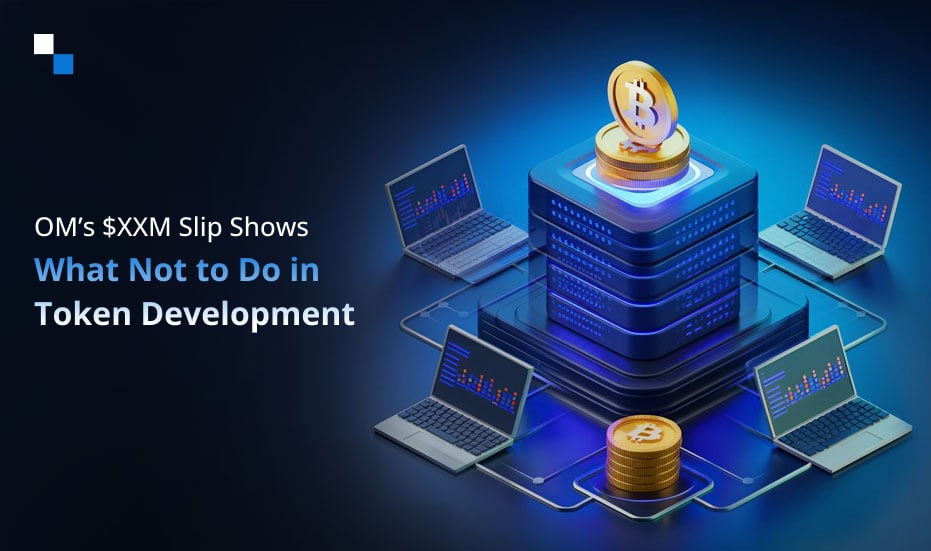
Olympus DAO and its Working: An Overview
February 21, 2022
Building a DeFi Lending Platform like Aave: Things you Need to Know
February 23, 2022Cryptocurrency investors have become millionaires overnight, only to lose a large portion of their fortune just a few weeks later. While this is great to see, it also demonstrates the unpredictability of popular cryptocurrencies like bitcoin, mainly when used to pay for products and services. Stablecoins are helpful in this situation. A Stablecoin Development Company can help you create your niche by undertaking StableCoin Development for your venture.
Stablecoins are supposed to have a significantly more stable value than regular cryptocurrencies. This is because they are linked to other assets like the US currency or gold.
What are Stablecoins?
Stablecoins are digital currencies backed by the value of an underlying asset. The underlying asset differs from coin to coin, as we’ll discuss later in this article.
Many stable coins are tied to fiat currencies exchanged on exchanges, such as the US dollar or the Euro, at a 1:1 ratio. Other stablecoins are linked to assets other than gold, such as precious metals or even other cryptocurrencies.
Why are Stablecoins a preferred choice for many?
ZERO VOLATILITY AND STABLE VALUE
A stable quantity of fiat cash supports Stablecoin. This makes the Stablecoin network more reliable and secure while allowing for any monetary change. When a new currency is introduced or the value of the currency network changes, automatically update it. You will have access to this new value and will be able to transact following it. It also has decentralized features that provide a reliable P2P exchange ecosystem.
FLUIDITY
The network’s fluidity and liquidity are among the many benefits and advantages of stable coin technology. This innovative technology will let a variety of enterprises raise cash for new initiatives safely and securely. While working on this network, the budget’s stability is maintained. If the project’s cost is likely to rise, additional tokens are automatically spent to ensure the project’s overall stability.
TRANSPARENCY
Stablecoin technology is built on the Blockchain network, ensuring that all currency transfers from one part of the world are transparent. This will allow you to keep all of your data and information secret while also removing all of the complexities associated with accessing it. You and your customer will have complete control over the transaction’s details.
NETWORK WITHIN A NETWORK
Stablecoin assists its users in establishing a sizable digital money network. Consumers can now conduct a wide range of digital transactions using GoCoin and Bitfinex. Digital to fiat currency communication allows you to create an extensive network with multiple clients you can interact with.
There are four types of stablecoins:
When looking for stablecoin development, you can choose between the following types:
STABLECOINS WITH FIAT COLLATERAL
Stablecoins that are collateralized — or backed — by fiat currency are the most common. Stablecoins backed by fiat have a 1:1 ratio, indicating that one stablecoin equals one unit of money. To back up each stablecoin, there is (theoretically) real fiat currency held in a bank account.
When someone wants to exchange their coins for cash, the stablecoin’s manager will deduct the amount of fiat from their reserve and send it to the person’s bank account. The equivalent stablecoins are then “burned” or permanently removed from circulation. Fiat-collateralized stablecoins are the simplest stablecoin form, and simplicity has a lot of advantages.
It’s simple to grasp for someone new to cryptocurrencies, leading to greater acceptance. The value of a pegged coin should remain reasonably stable as long as the country’s economy to which it is tethered remains relatively stable.
STABLECOINS WITH COMMODITY COLLATERAL
Various types of movable assets back Stablecoins that are commodity-collateralized. Gold is the most commonly collateralized asset. Stablecoins backed by oil, real estate, and different precious metals are also available.
The value of a real-world asset is effectively exposed to holders of commodity-backed stablecoins. These assets can gain — or depreciate — in value over time, changing trade incentives. Stablecoins backed by commodities are occasionally touted to make specific asset classes, like real estate, more accessible to smaller investors.
STABLECOINS WITH CRYPTO-COLLATERAL
Because everything is done via blockchain technology, crypto-backed stablecoins are theoretically more decentralized than their fiat-backed counterparts.
These stablecoins are frequently over-collateralized to absorb price variations in the collateral, reducing price volatility risks. Crypto-backed stablecoins are a more complicated type of stablecoin that hasn’t gained acceptance as quickly as other options.
STABLECOINS WITHOUT COLLATERAL
Non-collateralized stablecoins have no backing, which may seem counterintuitive considering the nature of stablecoins. However, the concept isn’t as far-fetched as it appears.
Remember that the US dollar used to be backed by gold, but that disappeared decades ago, yet dollars are still perfectly stable because people trust them. non-collateralized stablecoins can be treated in the same way.
To manage the number of stablecoins, these coins adopt an algorithmically driven technique. Seignorage shares is a type of model.
As the demand for stablecoins grows, more ones are issued to bring the price back to normal. When the price of a coin falls too low, cash on the market is purchased to lower the circulating supply. Prices of these stablecoins should, in theory, be stable because they are determined by market supply and demand. This is the most decentralized stablecoin because it is not backed by anything else.
Develop your own Stablecoin with us
Schedule Free DemoProcess of Stablecoin Development
Stablecoins are developed on their collateral base by tying them with either crypto, gold, or cash before the development process starts. Depending on your project requirements, they can be fully backed by the US dollar or other fiat currencies.
This is quite similar to currency pegging, generally carried out by central banks in headquartered countries. The biggest roadblock in the development of a stablecoin is normally scouting for a team of well-experienced blockchain developers. Furthermore, the chosen Stablecoin Development Company must be experienced in providing a wide range of stablecoin development and creation services.
Here are some of the most critical steps to consider while building a stablecoin for your company.
Step 1. Finalize what type of Stablecoin you want to launch
Before you start developing your stable coin, you must first conduct market research and select the type of stablecoin you want to launch for your company. There are four major types of stablecoins, as previously mentioned. Stablecoins can be collateralized, crypto-collateralized, commodity-backed, or non-collateralized. It’s difficult to compare between them. However, a fintech research firm or an expert Blockchain development service can help you in finding the best suitable stablecoin for your niche.
Step 2. Finaliste the Blockchain tech stack for Development
Once you finalize the type of stablecoin your business requires, you’ll need to choose a blockchain platform to build it. The Ethereum blockchain was once the only platform for manufacturing stablecoins, but that is no longer the case. Hence it is critical to decide upon the base of your upcoming Stablecoin in advance.
Step 3. The mechanism for maintaining liquidity
It is vital to maintain liquidity at all costs because that is the primary characteristic of stablecoins. If liquidity is lost, the whole stablecoin process may be rendered useless. Follow the advice from some expert crypto or financial expert to ensure that your Stablecoin doesn’t entangle between the loop of demand and supply.
Step 4. Inflation and value evaluation
It’s critical to have an automated monitoring system to provide daily currency rates. In addition, various indexes indicating current consumption trends should also be captured live so that there is an accurate mechanism to calculate inflation and its effects on the value of the coin.
Step 5. Fees for Transactions
Transaction fees are one way to generate income, which needs to be shared further with the stakeholders. In the case of stablecoin, a part of the income earned as transaction fees should go to the partners. The rest of the revenue must be added to the liquidity pool so that liquidity can be maintained.
Step 6. Defending against an abundance of supply
For the users to remain intact with the primary market, they mustn’t be charged a hefty fee while selling their stablecoins. This will ensure that they do not go out of the primary markets to the secondary market to fetch a better price for their stablecoins.
Step 7. The development phase of your Stablecoin
You can design your stablecoin in this phase. You can comprehend the flow of transactions and how the entire stablecoin system will work when creating a stablecoin.
Step 8. Final of Deployment on Mainnet
After you’ve finished designing your stablecoin, you’ll need to build the system. Developers will construct smart contracts to interface with a stablecoin and launch nodes on the blockchain during this stage of development. You can deploy the stablecoin on the test net once all of your required features have been produced and connected to the blockchain.
You may discover various test nets in the crypto marketplace if you create a stablecoin utilizing the Ethereum blockchain. Then, on the test net, examine the quality of your stablecoin. When you feel satisfied, launch it on the mainnet.
After you have completed designing your stablecoin, you can prepare for final deployment. Developers will integrate smart contracts with the interface of the stablecoin and release notes at the blockchain during this phase of development. When you feel satisfied with the testing, release the stablecoin on the mainnet.
The focus has always been on creating cryptocurrencies as a less risky and more liquid digital currency. The stablecoin is what the crypto community refers to as the “Gods of Coins.” It can facilitate frictionless transactions. Hire a Stablecoin Development Company today to get your stable coin.



